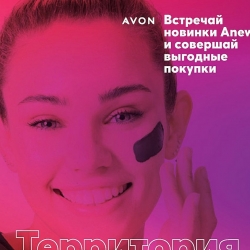| Unit 4: The world around us Lesson theme: Checkpoint 4 | School: Smirnov secondary school №1 |
| Date: 17.08.17 | Teacher name: Gappasova D.B |
| Class: 1 | Number present: | Absent: |
| Learning objectives: | 1.S3 pronounce basic words and expressions intelligibly 1.S5 produce wordsin response to prompts 1.L1 recognise short instructions for basic classroom routines spoken slowly and distinctly 1.L3 recognise the spoken form of a limited range of basic and everyday classroom words 1.R3 recognise some very high-frequency words from local environment
|
| Lesson objectives:
Language objectives: | All learners will be able to: |
| Recognize the names of pets, wild animals while listening to the record; Recognise basic colours and sizes
|
| Most learners will be able to: |
| Read the familiar words and to find the corresponding picture
|
| Some learners will be able to: |
| Match the simple sentences with the pictures in correct way
Teacher checks the understanding of the material learned in the previous Module Subject specific vocabulary: big, small, black, brown, pink, white, green, blue, red, cat, dog, parrot, rabbit, tortoise, spider, mouse, fish Useful classroom language: It' s a ..., I don't lik... |
| Previous learning | Pets, Colours, Wild animals, Sizes |
| Plan |
| Planned timings | Planned activities (replace the notes below with your planned activities)
| Resources |
| Beginning 2-3 min
|
Warming-up activity: Teacher gives the pictures of different pets and wild animals to each pupils. Pupils colour them. Then the teacher choose one of the coloured strips, demonstrates it to the pupils, names the colour. Pupils show the picture of this colour and name it. |
Cards with the pictures of pets and wild animals; Coloured strips
|
| Middle 3-5 min
5 min
8-10 min
| 1 Task: Pupils find the stickers at the end of the book, which are correspond to the given words. The teacher checks the correct answers. 2 Task: Teacher switches on the audioscript. Pupils listen to it and colour the pictures according to the order of their appearance in the audioscript. Keys: The tortoise is pink. The parrot is blue. The mouse is green. The fish is brown. 3 Task: There are given the pictures of some pets and wild animals. Pupils read the sentence under each picture and put a tick (if it corresponds to the picture) or a cross (if it doesn’t correspond to the picture) Keys: 1. Tick 2. Cross 3. Cross 4. Tick 5. Tick 6. Cross Rabbit, dog, cat, mouse, parrot, hamster | Stickers Audioscript Worksheets with Checkpoint 4 Smiles Report |
| End 3-5 min | The teacher puts the flashcards with wild animals and pets on the board and says: "The animals are got lost. Help them to find their way home". Pupils one by one take the flashcard and put it into the right box (Home or Forest) until all animals will be at home.
| Flashcards Pets an Wild animas |
| Additional information |
| Differentiation – how do you plan to give more support? How do you plan to challenge the more able learners? | Assessment – how are you planning to check learners’ learning? | Cross-curricular links
Health and safety check
ICT links
Values links |
| More support: Teacher provides the help during the doing the exercises. He/she records the sentences of ex 3 and swithes on it for those who can't read
More-able learners: Teacher gives extra task for stronger pupils on the worksheets. They point and colour: Fox is red. Bear is brown. Mouse is blue. Wolf is black. Rabbit is pink.
| Formative assessment according to their answers in woksheets of Checkpoint 4. The teacher checks the pupils’ answers and gives them certain smiles from My smiles report in order to assess their achievements, then writes the appropriate comments | Cross curricular links with Environmemt Studies |
| Reflection Were the lesson objectives/learning objectives realistic? What did the learners learn today? What was the learning atmosphere like? Did my planned differentiation work well? Did I stick to timings? What changes did I make from my plan and why?
| Use the space below to reflect on your lesson. Answer the most relevant questions from the box on the left about your lesson. |
|
|
| Summary evaluation
What two things went really well (consider both teaching and learning)?
1:
2: What two things would have improved the lesson (consider both teaching and learning)?
1:
2:
What have I learned from this lesson about the class or individuals that will inform my next lesson?
|

















